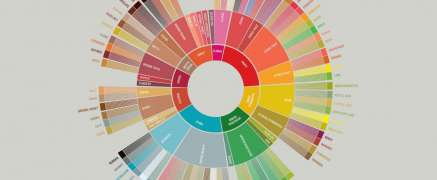When the wine sommelier makes strange noises during the tasting and speaks of a flowery bouquet, fruity aromas of peach and melon, a silky texture and a long finish, this is normal. But what if I tell you that exactly this is done with coffee as well?
Why?
With the tongue we can only distinguish four flavors – sweet, sour, salty and bitter. In roasted coffee, however, over 1000 flavors can be detected, which gives our cup of coffee such a unique taste.
Tastings are therefore part of the overall evaluation of the quality of a coffee. They are common practice by many different coffee production experts:
- coffee producers
- governmental organisations, eg. for quality control and or for the export release
- Exporters
- Importers who decide on the basis of the tasting results, which coffee they buy for the free market or a specific customer.
- Agents who provide coffees to customers, such as large roasting companies, and who need to find coffees according to the profiles of their customers.
- Roasters who, if they do not trade directly with the country of cultivation themselves, ask their importers for samples of certain coffees to see if they match their tastes.
- And when roaster create coffee blends or do their regular quality checks.
What are the steps?
The process and the evaluation criteria are largely standardized worldwide despite small differences.
- First of all, the green coffee is evaluated for odor, color, water content, etc.
- After that, the defective beans (broken, immature, infested with insects, etc.) are counted and sorted out and assigned to a given quality level.
- Then about 100 g are roasted in a sample roaster for about 6 to 8 min. depending on the bean variety and type and quality of the processing.
- The coffee is grinded very roughly and filled in cups or glasses – about 8.25 g / 150 ml of water.
- Then one examines the smell of the coffee powder by shaking it lightly in the cup and describe the smell of the powder in a small form. This can vary depending on the type of coffee and variety like weak or intense to sweet, fruity and flowery or chocolaty.
- The coffee is then poured over with 96 °C hot water.
- After a short while, break the coffee floating on the surface with a large spoon and scoop gently.
- Leave the coffee for another 5-8 min. to cool.
- “Breaking the coffee“: In order to be able to evaluate the aroma of the coffee, you bend over the cup very close. For a more intense perception, it is also easy to stir with the spoon on the surface of the coffee. And again you make some notes about the aroma and smell.
- When the coffee has cooled to about 70 °C, the the fun part begins: fill the spoon ¾ with the coffee from the cup, lead the spoon to the mouth and trie to pull the coffee jerkily into the mouth, that the whole tongue is covered – with slightly open mouth, so that at the same time some air is sucked in with.
How long you keep the coffee in the mouth to describe the taste and the sensory best is really up to you. After you spit the coffee in a small bowl or cup and rinse the spoon with water. Then you taste the next coffee. After the first round you make 1 – 2 min break. Rinse your mouth with water and repeat the tasting. The perception should now be more intense. Afterwards make notes in a table about the flavor, taste, aftertaste, acid, sweetness, body and balance.
The SCA (Specialty Coffee Association) developed a protocol and cupping form for this purpose. After 2 or 3 rounds, take a break of about 10 min. and repeat the entire process one more time and take notes again. To help you describing the aroma the aroma wheel is very helpful.
Image Source: scaa.org


